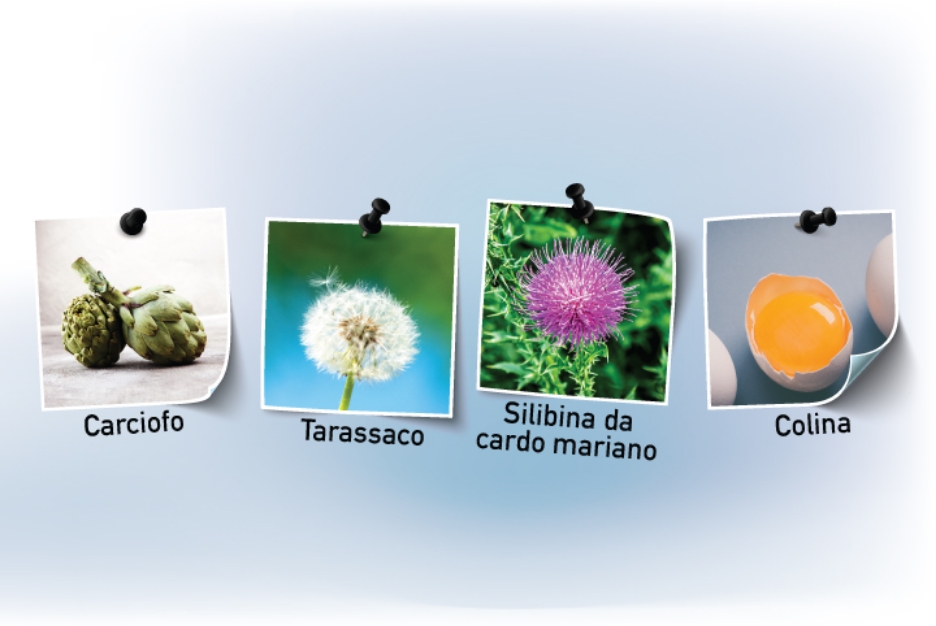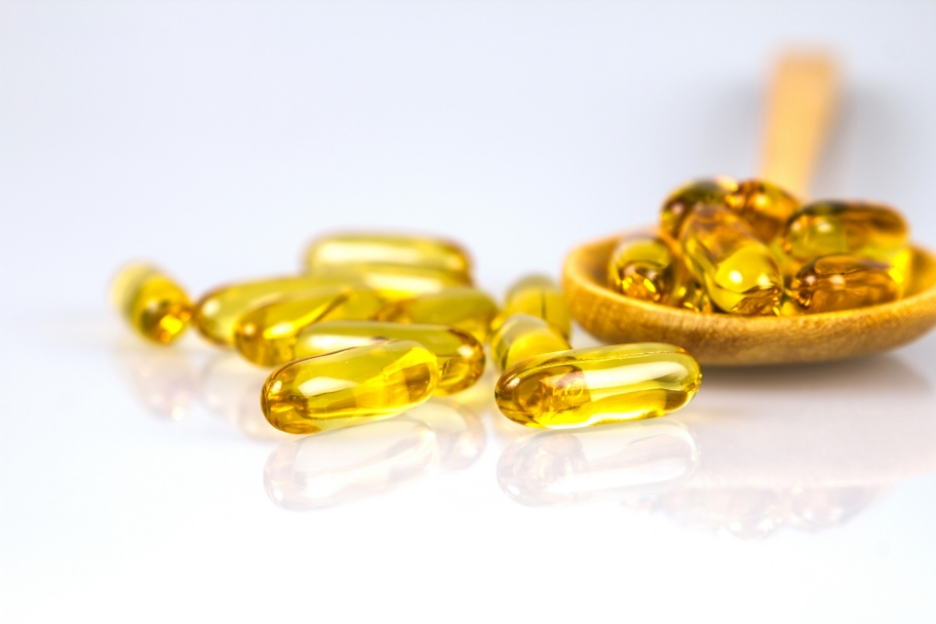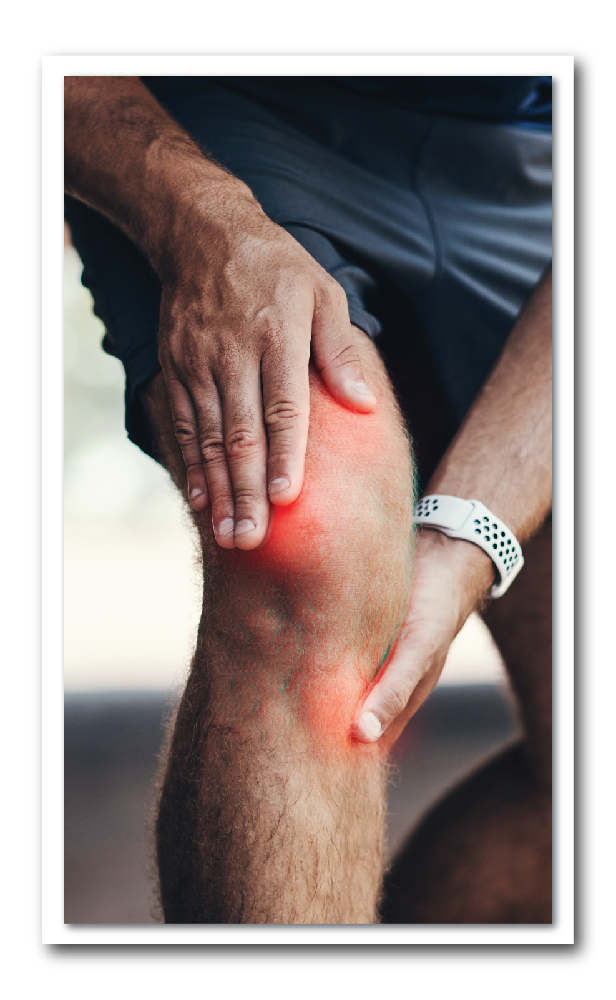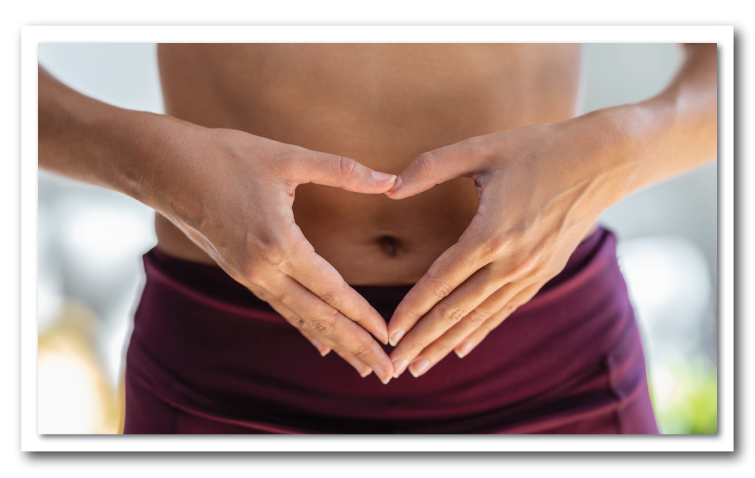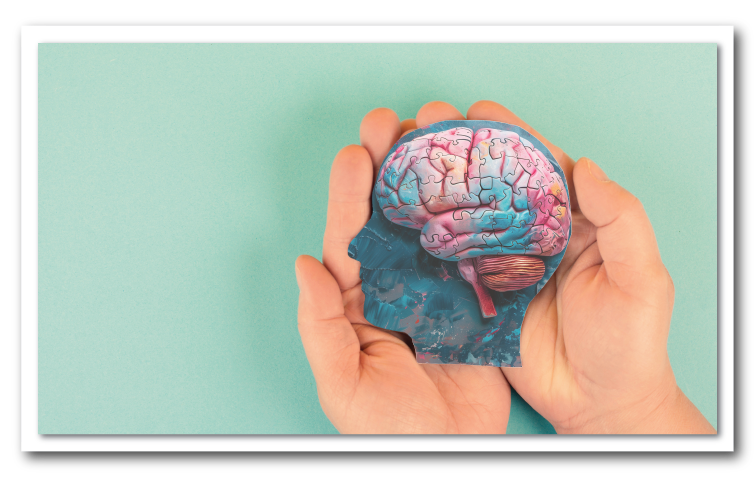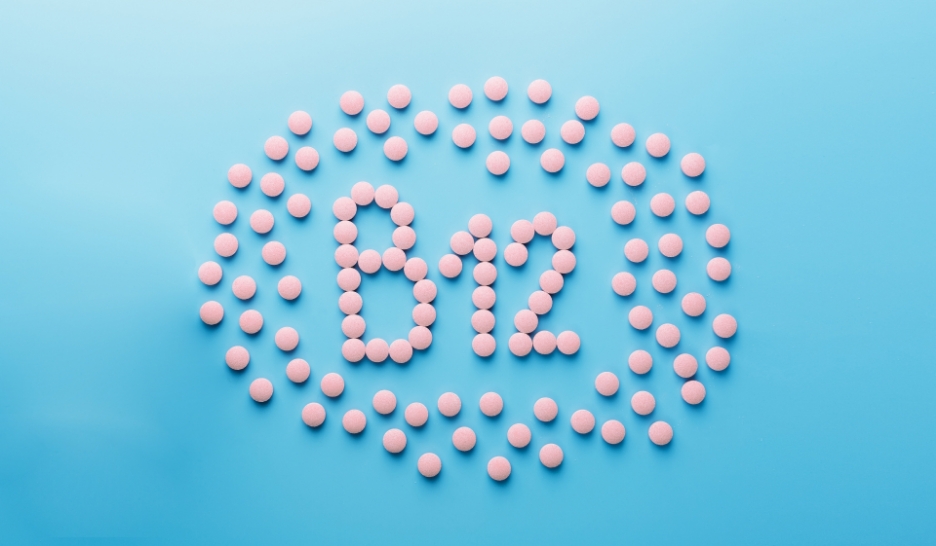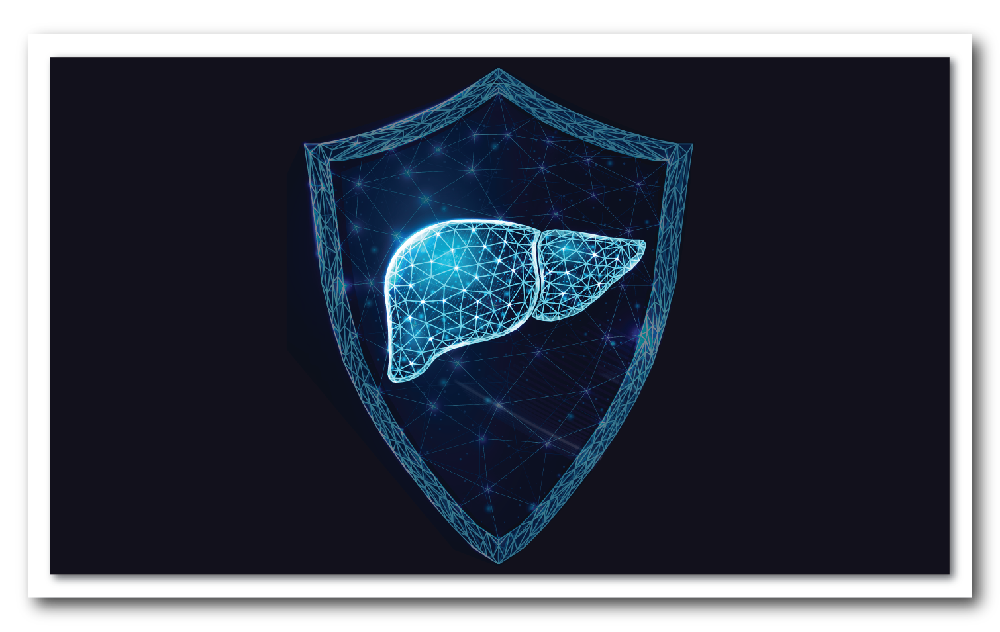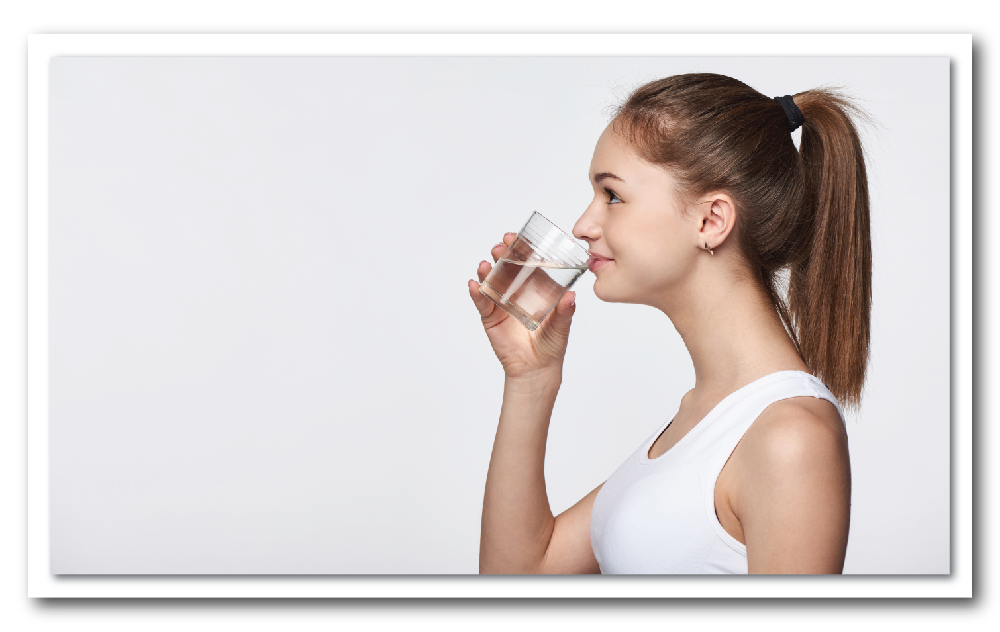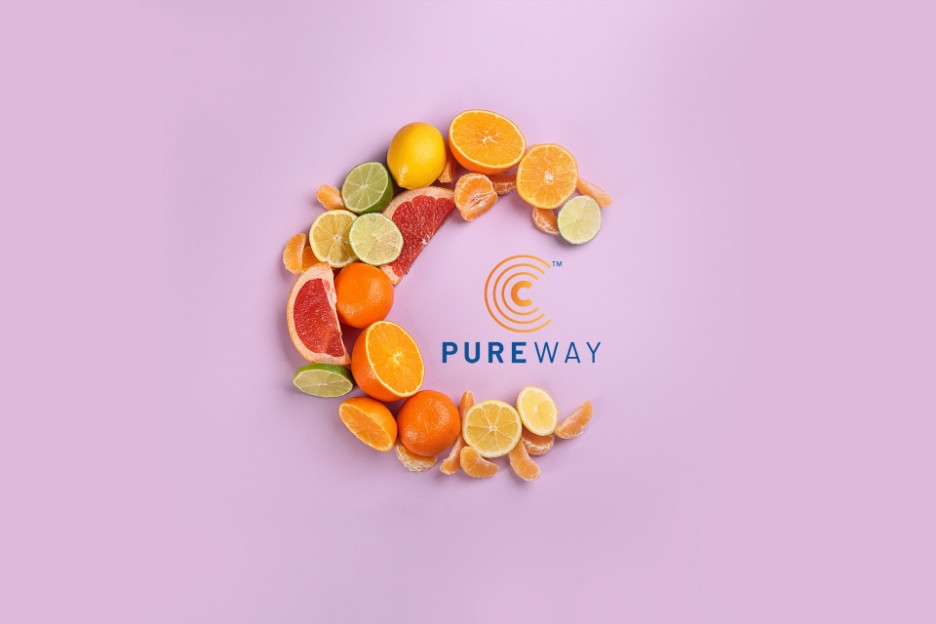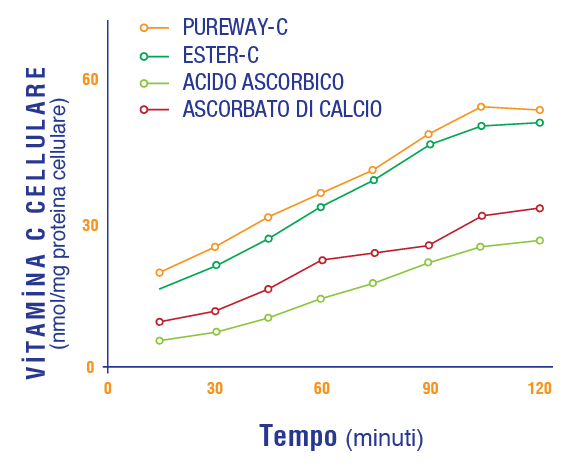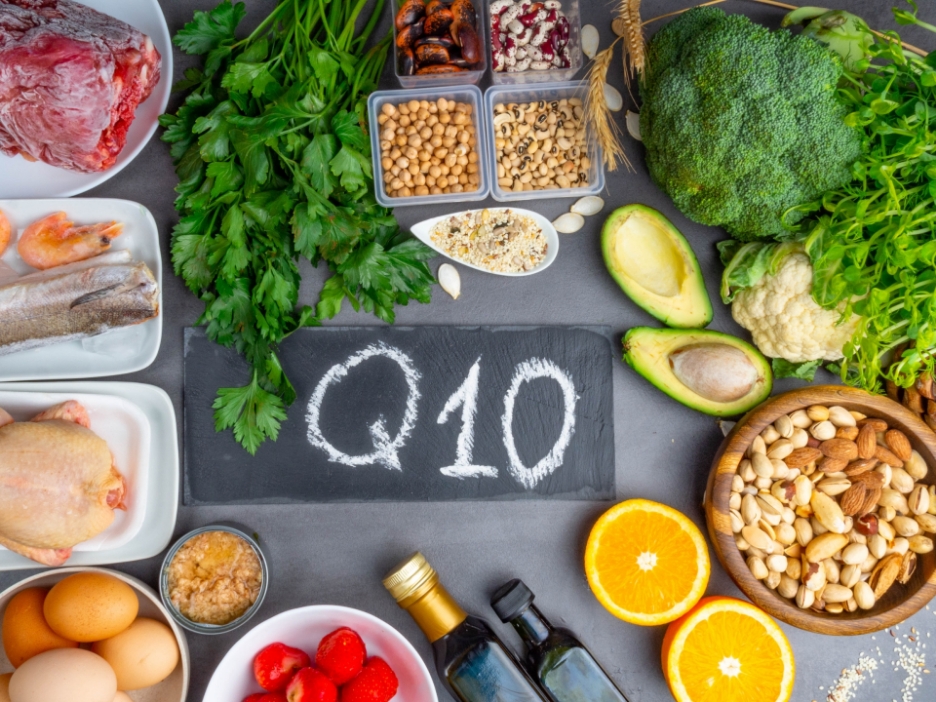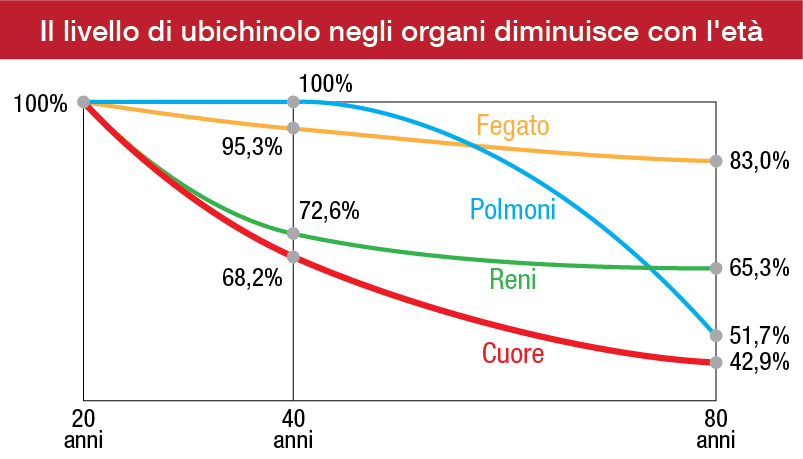4 INGREDIENTI ESSENZIALI PER IL FEGATO
Il fegato svolge numerose funzioni essenziali per il nostro organismo, tra cui:
- Detossificazione: elimina le tossine e le sostanze nocive dal sangue.
- Produzione della bile: facilita la digestione dei grassi.
- Regolazione metabolica: controlla i livelli di glucosio, lipidi e proteine nel sangue.
- Sintesi proteica: produce proteine importanti come l’albumina e i fattori della coagulazione.
- Stoccaggio: immagazzina vitamine (A, D, E, K) e minerali come il ferro.
- Sistema immunitario: contribuisce a difendere l’organismo attraverso le cellule di Kupffer.
- Eliminazione dei globuli rossi vecchi: il fegato ricicla ferro ed elimina i prodotti di scarto.
Un organo vitale che lavora incessantemente per mantenerci in equilibrio!
La colina, il cardo mariano, il tarassaco e l’estratto di carciofo sono quattro ingredienti fondamentali per la salute del fegato.
La supplementazione di colina ha dimostrato di normalizzare il metabolismo del colesterolo, un effetto sufficiente a prevenire lo sviluppo della steatoepatite non alcolica (NASH) e a migliorare la funzionalità epatica. Questo beneficio deriva dalla capacità della colina di supportare il trasporto e il metabolismo dei grassi nel fegato, riducendo l'accumulo lipidico e l'infiammazione che sono caratteristici della NASH. Inoltre, contribuisce a migliorare la sintesi della VLDL (lipoproteina a bassissima densità), favorendo l'esportazione di lipidi dal fegato, con effetti protettivi sulla salute epatica.
Il cardo mariano (Silybum marianum) è una delle piante più efficaci per la protezione e la detossificazione del fegato. Può raggiungere fino a 2 metri di altezza ed è caratterizzato da foglie e fiori spinosi. È riconosciuto in molti paesi come farmaco fitoterapico. La parte medicinale della pianta è costituita dai suoi semi, ricchi di silimarina, un complesso di flavonolignani (silibina, isosilibina, silicristina e silidianina) con effetti epatoprotettivi e rigenerativi.
La silimarina aumenta i livelli di glutatione nel fegato, contribuendo a neutralizzare i danni ossidativi, senza stimolare la secrezione biliare. Questo rende il cardo mariano adatto nei casi in cui altre piante drenanti sono controindicate.
È impiegato soprattutto per:
- Danni epatici da alcol
- Steatosi epatica non alcolica
- Epatite cronica e cirrosi epatica
- Danni epatici da farmaci o tossine
Inoltre, è utile per il controllo della glicemia e dei livelli di colesterolo.
Il carciofo (Cynara scolymus) è una pianta molto apprezzata nella fitoterapia moderna. Le sue proprietà curative si trovano principalmente nelle foglie, mentre il fiore non ne contiene in quantità significativa. Le sostanze attive più importanti del carciofo sono l'acido caffeico e i suoi esteri (cinarina), la cui concentrazione si riduce notevolmente durante il processo di essiccazione. Altri componenti attivi includono acido clorogenico, lattoni sesquiterpenici e flavonoidi.
Il carciofo ha effetti coleretici, antiossidanti e epatoprotettivi. Riduce i livelli di colesterolo nel sangue ed è indicato in caso di dispepsia, mancanza di appetito e colon irritabile. Inoltre, aiuta a prevenire la formazione di calcoli biliari a base di colesterolo ed è impiegato nei trattamenti drenanti.
Il tarassaco (Taraxacum officinale) appartiene alla famiglia delle Asteraceae ed è originario dell'Europa e dell'Asia settentrionale. Le foglie sono un’aggiunta gustosa e salutare per le insalate, ricche di minerali come potassio, beta-carotene, flavonoidi, lattoni sesquiterpenici, acido taraxinico e steroli.
Principalmente, il tarassaco è utilizzato come diuretico, anche se l’effetto è meno marcato nelle radici a causa del contenuto di inulina, una fibra prebiotica che favorisce la salute della flora intestinale e aiuta a regolare i livelli di zucchero nel sangue. Ha anche un effetto coleretico confermato.
È impiegato come tonico amaro per stimolare l’appetito, in caso di dispepsia e per il trattamento del fegato grasso legato all’obesità. Inoltre, è utile nei trattamenti drenanti e come terapia aggiuntiva per il controllo del colesterolo, la cellulite e la perdita di peso.ù
Quando si tratta di proteggere e sostenere la salute del fegato, è utile considerare l'assunzione di piante epatoprotettrici, che possono essere utilizzate in combinazione per ottenere benefici sinergici. Noi possiamo integrare queste piante nella nostra dieta per proteggere il fegato da danni e stress, migliorando la sua funzionalità e favorendo la disintossicazione dell'organismo. Grazie alle loro proprietà, queste piante possono offrire un valido sostegno per mantenere il nostro fegato in salute e promuovere il benessere generale del nostro corpo.
Pratt, D. S. (2010). Liver chemistry and function tests. Sleisenger and Fordtran's Gastrointestinal and Liver Disease. 9th ed. Philadelphia, Pa: Saunders Elsevier. Kubes, P., & Jenne, C. (2018). Immune responses in the liver. Annual review of immunology, 36(1), 247-277. Wang, M., Simon, J. E., Aviles, I. F., He, K., Zheng, Q. Y., & Tadmor, Y. (2003). Analysis of antioxidative phenolic compounds in artichoke (Cynara scolymus L.). Journal of agricultural and Food Chemistry, 51(3), 601-608. Davaatseren, M., Hur, H. J., Yang, H. J., Hwang, J. T., Park, J. H., Kim, H. J., ... & Sung, M. J. (2013). Taraxacum official (dandelion) leaf extract alleviates high-fat diet-induced nonalcoholic fatty liver. Food and chemical toxicology, 58, 30-36. Dassprakash, M. V., Arun, R., Abraham, S. K., & Premkumar, K. (2012). In vitro and in vivo evaluation of antioxidant and antigenotoxic potential of Punica granatum leaf extract. Pharmaceutical biology, 50(12), 1523-1530.

